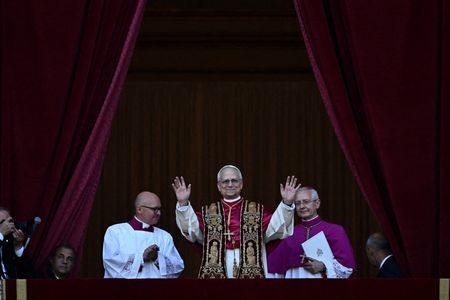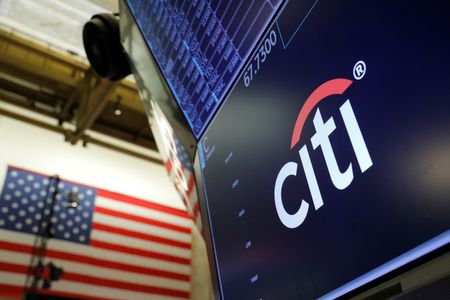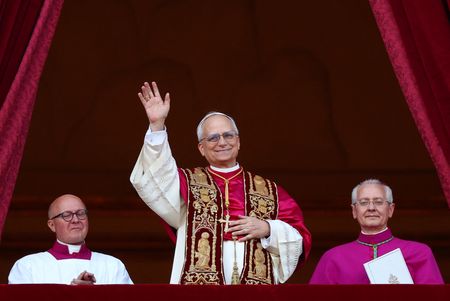By Naomi Rovnick
LONDON (Reuters) -Big central banks are diverging as White House tariffs threaten to raise U.S. inflation and a dash out of the dollar sparks disinflationary currency strength elsewhere.
The U.S. Federal Reserve is holding rates steady for now, while Switzerland is moving closer to negative rates once again, and Japan remains an outlier with its bias to hike rates.
Here’s a look at where 10 developed-market central banks stand.
1/ SWITZERLAND
The Swiss National Bank next meets on June 19 and says it is ready to pull interest rates back into negative territory, from 0.25% currently, to stop the surging Swiss franc hurting the export-heavy economy and raising deflation risks.
But with speculators now betting against the franc after haven demand drove it almost 7% higher against the dollar since early April, the SNB may avoid having to resort to unconventional monetary policies after all.
2/ CANADA
The Bank of Canada held rates at 2.75% in April after seven consecutive cuts. Its policymakers were evenly split on the need for more easing and Governor Tiff Macklem said global trade uncertainty made forecasting “of little use”.
Still, money markets see the BoC dropping rates another quarter point by July, with a further reduction by year-end.
3/ NEW ZEALAND
Traders widely expect the Reserve Bank of New Zealand to cut rates by 25 basis points to 3.25% on May 28 to protect the China-focused economy from trade blows, then to keep cutting for the rest of this year as the strong kiwi dollar helps inflation stay on target.
4/ SWEDEN
Sweden’s Riksbank left its key rate unchanged at 2.25% on Thursday but left the door open to rate cuts ahead.
Swedish manufacturing activity expanded in April as the government’s defence and construction spending pledges boosted hopes the slowing Scandinavian economy can avoid a recession.
5/ EURO ZONE
The European Central Bank reduced rates for the seventh time in a year in April and money market traders are almost unanimously expecting another quarter-point cut to 2% on June 5. They also see another cut by year-end as highly likely.
Headline inflation in the euro zone has moderated to 2.2%, the strengthening euro is lowering import prices, growth is slowing and while hopes for German fiscal stimulus have been high, this week’s upheaval in the Bundestag has cast some doubt.
6/ UNITED STATES
The U.S. central bank, which is under fire from President Donald Trump for resisting rate cuts, on Wednesday held borrowing costs at 4.25%-4.50%.
The Fed said that risks of higher inflation and unemployment had risen, further clouding the U.S. economic outlook as its policymakers grapple with the impact of tariffs.
The Fed has kept interest rates on hold since December, following 100 bps of cuts last year. Money markets price in roughly 75 bps of further easing by year-end.
7/ BRITAIN
The Bank of England, which has lowered borrowing costs slowly to accommodate bumpy inflation trends, delivered a 25 bps cut to 4.25% on Thursday, as expected.
But an unexpected three-way split among policymakers as Trump’s tariffs weigh on global economic growth caught markets by surprise. The Monetary Policy Committee voted 5-4 in favour of cutting rates, but two members voted for a bigger half-point cut while two wanted to keep rates on hold.
Traders anticipate another cut by August.
8/ AUSTRALIA
The Reserve Bank of Australia held rates steady at 4.1% in April but as U.S. tariffs threaten China, Australia’s biggest trading partner, money markets have placed a more than 90% chance of a 25 bps reduction on May 20 and priced about 105 bps of cuts by year-end.
9/ NORWAY
Norway’s central bank has ditched plans to ease monetary policy as its oil-linked currency weakens alongside the global trade outlook, posing a fresh inflationary threat.
As expected, the Norges Bank kept rates on hold at a 17-year high of 4.50% on Thursday.
10/ JAPAN
The Bank of Japan, long-expected to pursue rate hikes, has turned cautious as it waits to see how tariffs will affect its export-focused economy and after Japanese factories suffered blows from the U.S. raising levies on imported vehicles.
The BoJ held borrowing costs steady at 0.5% on May 2 as Governor Kazuo Ueda said a pledge to bring inflation down to 2% had been “pushed back somewhat” and investors nervously awaited the results of high-stakes U.S.-Japan trade talks.
(Reporting by Naomi Rovnick. Editing by Dhara Ranasinghe and Mark Potter)











